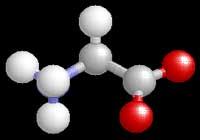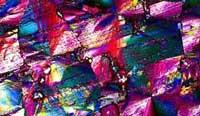Polarized light for antibiotic generation
2002/10/23 Orobengoa, Olatz - Elhuyar Zientziaren Komunikazioa

A single molecule can have different forms in three dimensions, each being called enantiomers. Although all enantiomers have the same composition, the different form modifies the functions of the molecule. Therefore, it is very important to choose the most effective way in the case of drugs.
However, it is not the only problem. It is also convenient to crystallize the molecules, if you want to produce the drug. And, as with enantiomers, the same occurs with crystals: one molecule can crystallize in different forms and each form will have different efficacy.

To overcome this problem, the Brooklyn Polytechnic University in New York proposes to use polarized light. Trial with glycine amino acid. Glycine can crystallize in three forms, alpha, beta and gamma, and after being under the influence of the laser beam, scientists have seen that, in addition to crystallizing faster than normal, it only crystallizes in alpha form. According to them, the electric field of polarized light acts on the glycine molecules and forces them to place them in a certain form.
Obtaining glycine with other molecules would be a great advance, since in addition to mitigating the crystallization process, the number of impurities of the drugs would be significantly reduced.

Gai honi buruzko eduki gehiago
Elhuyarrek garatutako teknologia





